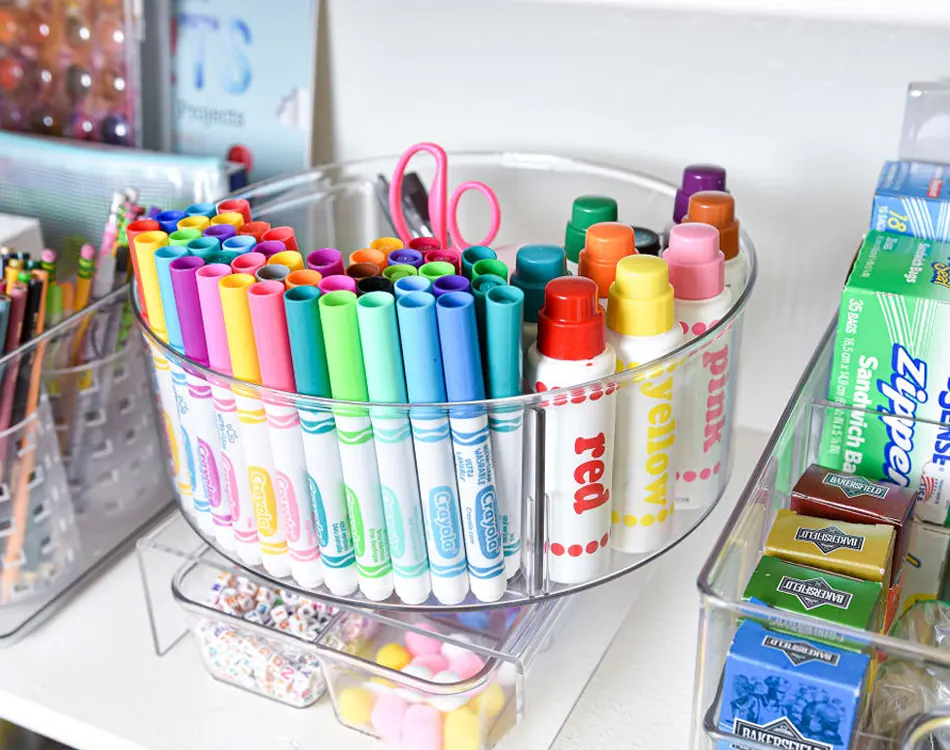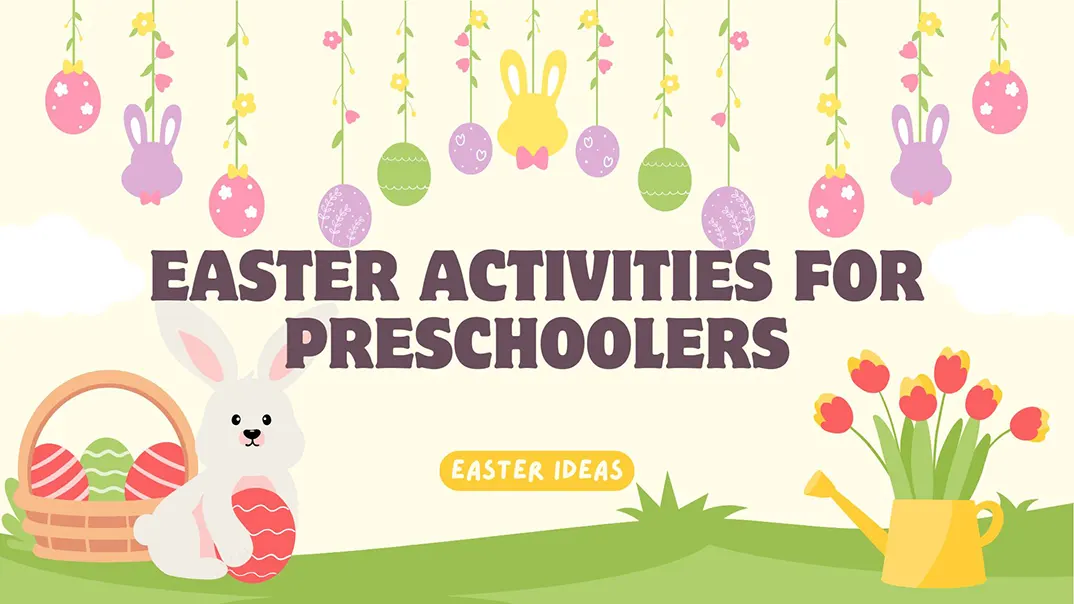Spring is in the air, whispering through blooming tulips and fluttering pastel ribbons. With it arrives Easter, a season painted in soft colors, gentle warmth, and playful wonder. For preschoolers, it’s a magical time of curiosity and joy, where every egg hides a secret and every bunny becomes a canvas for imagination. This is where art meets childhood, and where creativity begins to bloom just like the flowers outside.
Easter activities for preschoolers are more than seasonal crafts. They are windows into a child’s developing mind. As little hands grasp crayons, cut paper, or swirl paint across eggshells, they are not only creating, they’re learning. These activities nurture fine motor skills, emotional expression, and cognitive growth. Each brushstroke or glued pom-pom is a step toward greater confidence, coordination, and connection.
Easter becomes not just a celebration, but a conversation between imagination and the natural world. What follows is a gentle unfolding of ideas, a collection of Easter activities for preschoolers that celebrate spring, spark joy, and encourage hands to speak where words are just beginning to form.
15 Easter Activities for Preschoolers
Easter crafts are an exciting way for preschoolers to explore their creativity while celebrating the season. These hands-on Easter activities allow young children to work with different materials, enhance their fine motor skills, and express themselves through art. Crafting is fun and educational, helping preschoolers develop essential skills such as hand-eye coordination, focus, and patience.
Easter Crafts Activities: Paper Plate Easter Bunny

Nyenzo:
- Alama au crayoni
- Sahani ya karatasi
- White and pink construction paper
- Cotton balls
- Gundi
- Mikasi
- Macho ya googly
Steps:
- Paint or color the paper plate light (optional, or leave it white).
- Cut out two bunny ears from pink construction paper and glue them to the top of the plate.
- Attach cotton balls to the bottom of the plate to create the bunny’s tail.
- Draw or cut out eyes, a nose, and a mouth for the bunny.
- Add whiskers using markers or thin strips of paper.
Easter Crafts Activities: Egg Decorating

Nyenzo:
- Glitter (optional)
- Hard-boiled eggs or plastic eggs
- Non-toxic paint or markers
- Stickers (optional)
- Gems (optional)
Steps:
- Prepare the hard-boiled eggs or plastic eggs.
- Let the children decorate the eggs with paint, markers, or stickers.
- For extra flair, they can add glitter or gems to their designs.
- Allow the eggs to dry completely before displaying them.
Easter Crafts Activities: Bunny Mask Craft

Nyenzo:
- Markers, crayons, or cotton balls for decoration
- Cardstock or construction paper
- Gundi
- Mikasi
- Elastic band
Steps:
- Cut a bunny mask shape out of cardstock or construction paper.
- Cut out eyes and a nose from paper and glue them onto the mask.
- Decorate the mask with cotton balls for a fluffy effect.
- Attach an elastic band to the sides of the mask so children can wear it.
Easter Crafts Activities: Egg Basket

Nyenzo:
- Ribbon or paper strips for the handle
- Karatasi ya rangi ya ujenzi
- Mikasi
- Gundi
- Alama au crayoni
- Pom-poms
Steps:
- Cut out an egg shape from the colored construction paper.
- To create the basket’s bottom, cut a smaller oval or circle from another piece of colored paper.
- Glue pom-poms, colored circles, or other decorations onto the egg shape to make it colorful.
- Glue the smaller oval or circle to the bottom of the egg shape, aligning it with the bottom edges to create a basket-like structure.
- Cut a long strip of construction paper to form the handle. Glue the ends of the strip to the top of the egg shape, creating a loop.
Easter Crafts Activities: Bunny Ears Headband

Nyenzo:
- Headband (or a strip of paper to form a band)
- Construction paper (white, pink)
- Mikasi
- Fimbo ya gundi
- Stapler or tape
Steps:
- Cut out large bunny ear shapes from white construction paper.
- Cut smaller inner ear shapes from pink paper and glue them onto the more prominent ears.
- Attach the bunny ears to a headband by stapling or taping them to the top.
Make Easter Magic with the Right Materials
Bring every bunny, chick, and painted egg to life with our hand-picked art supplies designed just for little hands. Safe, vibrant, and mess-friendly, our preschool art kits turn simple ideas into joyful masterpieces. From pom-poms to pastel paints, we’ve got everything you need to spark creativity this Easter.
 Shop Easter Art Materials
Shop Easter Art Materials
Easter Crafts Activities: Egg-Shaped Suncatcher

Nyenzo:
- Kamba
- Clear contact paper
- Tissue paper (variety of bright colors)
- Mikasi
Steps:
- Cut the contact paper into an egg shape.
- Have children tear or cut the tissue paper into small pieces.
- Stick the tissue paper pieces onto the sticky side of the contact paper.
- Once it’s covered, place another layer of contact paper on top to seal it.
- Hang the suncatcher by attaching a string for a festive window decoration.
Easter Crafts Activities: Egg Carton Chicks

Nyenzo:
- Macho ya googly
- Egg carton
- Yellow paint
- Orange construction paper
- Mikasi
- Gundi
Steps:
- Cut out the individual sections of an egg carton to create chick bodies.
- Paint the egg carton sections yellow and let them dry.
- Cut out tiny beaks and feet from orange construction paper.
- Glue the beak and feet onto each section.
- Attach googly eyes for a cute, playful look.
Easter Crafts Activities: Easter Greeting Cards

Nyenzo Zinazohitajika:
- Stickers, ribbons for decoration
- Kadi za rangi
- Mikasi
- Fimbo ya gundi
- Markers or pens
Steps:
- Fold the cardstock in half to create a card.
- Decorate the front with Easter themes like eggs, bunnies, or flowers.
- Write a heartfelt message inside.
- Embellish with stickers or ribbon for a festive touch.
Easter Crafts Activities: Sock Bunny Toy

Nyenzo Zinazohitajika:
- Ribbon (optional)
- A clean sock (preferably white or pastel)
- Rice or cotton stuffing
- Rubber bands or thread
- Mikasi
- Marker
Steps:
- Fill the sock with rice or cotton until it forms a rounded body.
- Use rubber bands to section off the body, head, and ears.
- Cut the top of the sock into two flaps to create bunny ears.
- Draw a face with a marker and tie a ribbon around the neck.
Easter Crafts Activities: Paper Plate Easter Wreath

Nyenzo Zinazohitajika:
- Markers or stickers
- Sahani ya karatasi
- Mikasi
- Karatasi ya ujenzi (rangi mbalimbali)
- Gundi
Steps:
- Glue the shapes around the paper plate to form a wreath.
- Cut out the center of the paper plate to make a ring.
- Cut out egg shapes, flowers, and bunny shapes from construction paper.
- Decorate them with markers or stickers.
Create a Space Where Creativity Feels at Home
The right surface can change everything. Our child-sized art tables are thoughtfully designed to support posture, independence, and uninterrupted focus during creative play. With rounded corners, easy-to-clean finishes, and just the right height for little artists, they make every paint stroke feel natural and every idea feel welcome.
 Explore Art Tables for Kids
Explore Art Tables for Kids
Easter Crafts Activities: Bunny Paper Roll Craft

Nyenzo Zinazohitajika:
- Markers or googly eyes
- Toilet paper roll
- Karatasi ya ujenzi
- Gundi
- Mikasi
Steps:
- Wrap the roll in colored construction paper.
- Cut and glue ears to the inside top of the roll.
- Add a face using markers or googly eyes.
- Draw paws and a nose for a complete bunny look.
Easter Crafts Activities: Bunny Bookmark Corner

Nyenzo Zinazohitajika:
- Alama
- Colored paper (preferably white or pastel)
- Mikasi
- Gundi
Steps:
- Fold a square piece of paper into a corner bookmark.
- Cut out bunny ears and glue them to the top.
- Use markers to draw a cute bunny face.
- Slip onto book corners for a festive touch.
Easter Crafts Activities: Bunny Treat Bags

Nyenzo Zinazohitajika:
- Candy or small toys
- Paper bags (white or pastel)
- Alama
- Ribbon or twine
- Mikasi
Steps:
- Draw a bunny face on the front of the bag.
- Cut the top into ear shapes.
- Fill the bag with treats.
- Tie between the ears with ribbon for a cute closure.
Easter Crafts Activities: Bunny Spoon Puppets

Nyenzo Zinazohitajika:
- Small pom-poms (for tails and noses)
- Plastic spoons
- White and pink felt or paper
- Gundi
- Macho ya googly
Steps:
- Glue googly eyes and a pom-pom nose onto the back of a spoon.
- Cut out ears from felt or paper and attach them to the spoon.
- Add a small pom-pom tail at the handle end.
- Use for Easter-themed puppet shows or storytelling.
Easter Crafts Activities: Popsicle Stick Easter Chick

Nyenzo Zinazohitajika:
- Feathers (optional)
- Vijiti vya popsicle
- Yellow paint
- Gundi
- Orange paper
- Macho ya googly
Steps:
- Glue three or four sticks side-by-side to form a base.
- Paint the surface yellow and let it dry.
- Add googly eyes, a paper beak, and feet.
- Glue feathers to the sides or top for extra flair.
Hitimisho
While every Easter egg dries and each paper bunny finds its place, the greater masterpiece is what grows inside the child: confidence, imagination, and a joyful sense of expression. Art at this age is not about perfection but about process. And when that process is supported with care, space, and thoughtful materials, creativity has room to thrive.
At WinningKidz, we believe that a well-prepared environment is the foundation of inspired learning. As a trusted provider of children’s furniture, toys, and educational resources, we design every product with a deep respect for childhood development. From child-sized art tables to safe, engaging craft supplies, we help parents and educators create spaces where creativity is not just encouraged but truly celebrated.




